Everything You Need to Know About Product Returns



Product returns can be a burden on businesses. Every sale involves significant resources, and restocking alone can harm profits.
Today, returns are a fact of business life.
When managed well, your return process can build customer loyalty and even contribute to your bottom line (rather than drain it).
In this article, you’ll learn six steps to more efficient product returns management and three practical solutions to help reduce their likelihood.
The product return process starts when customers want to return an item for a refund or exchange, usually because they’re dissatisfied or have experienced post-purchase issues.
Companies then need to implement several steps to get the product back and organize fair compensation for the customer.
The returns journey can be a complex process that involves many different parties and locations:
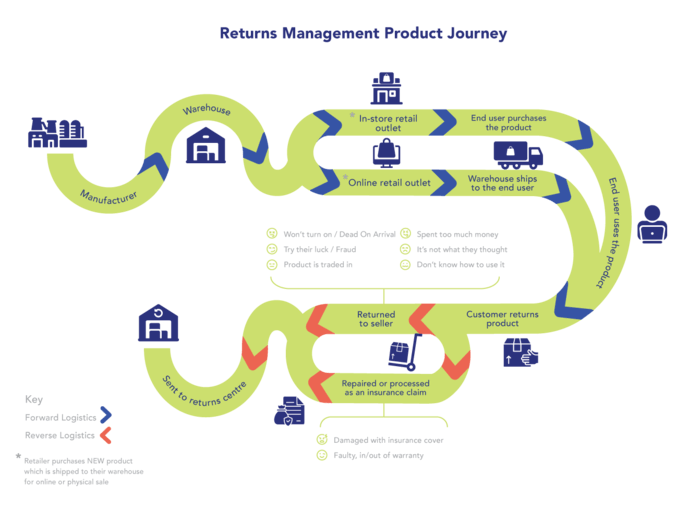
Source: Ingram Micro Lifecycle
In the EU, 30% and 40% of online purchases are returned. Although receiving a return request is never ideal, handling it well helps minimize losses and keep customers happier in the long run.
Customers return products for many reasons. Some of the more common reasons include:
While returns are standard in most industries, retailers selling large, unique, or expensive items suffer significantly when customers send back products.
Big-ticket products are higher-priced, often large items — and they’re also liable for returns, typically at great cost to the business.
Big-ticket (also called high-ticket) items include products like:
Returns for these items can be a big hit to the bottom line, especially for smaller businesses. In addition to losing the initial sales revenue, businesses may also incur expenses for return shipping, restocking, and potentially even inspection or refurbishment.
International retailers must also consider extra processing return costs, such as currency exchange fees, translation fees, customs duties, and taxes.
These added costs reduce net profits and strain logistics, especially when handling bulky, high-value items.
Big-ticket returns upset customers, too. Buyers usually spend time researching options, reading reviews, and budgeting for big-ticket items. When the product doesn’t meet their expectations or arrives with issues, it can feel like a personal letdown.
Many retailers recoup some of the cost of returns by charging the customer for return shipping or a restocking fee. However, this can also aggravate customers.
For example, this customer bought a flat-screen TV from AO that didn’t live up to expectations, so they wanted to return it. AO deducted 10% of the cost because it had already been used and wasn’t faulty.
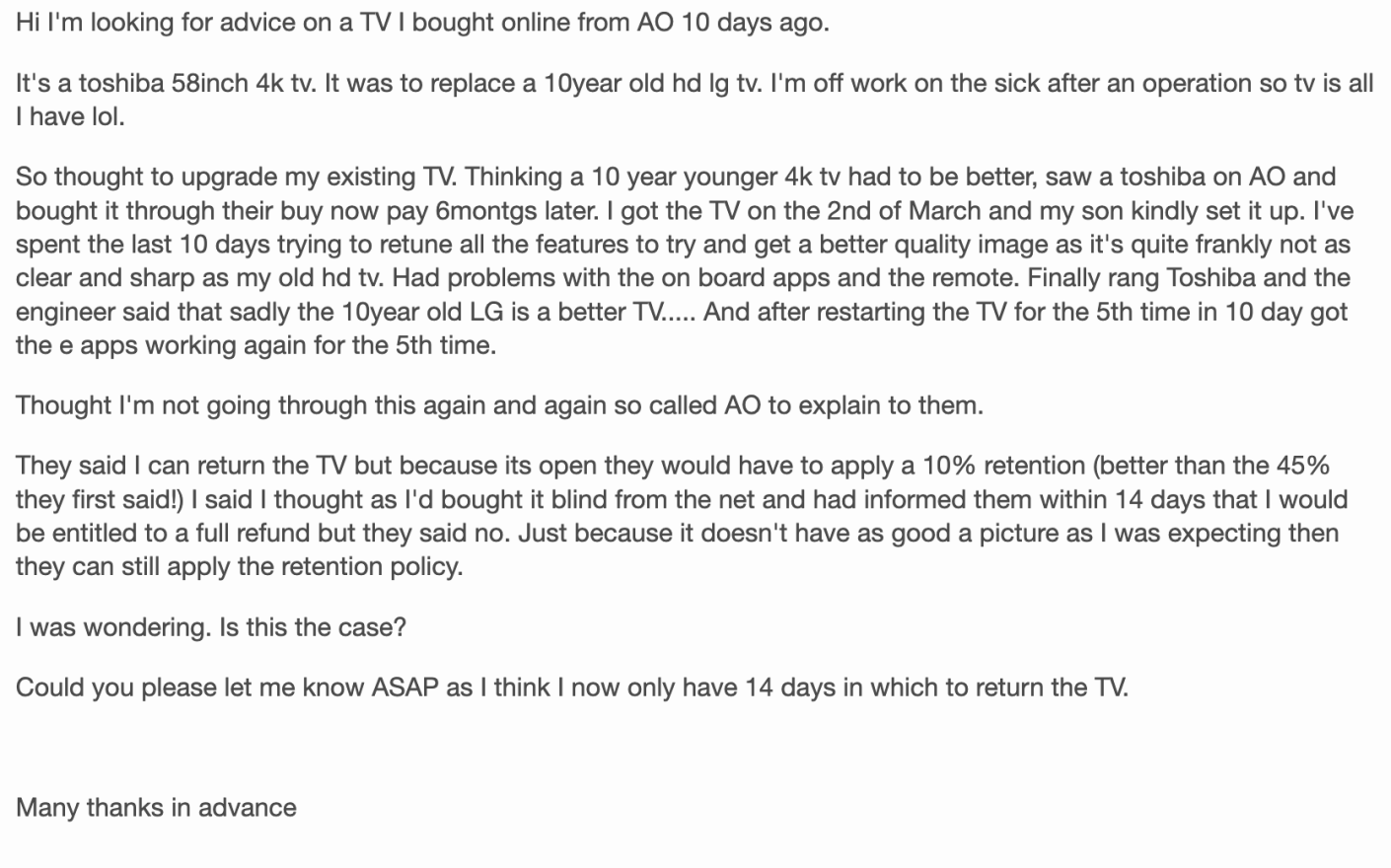
The inconvenience of repackaging, scheduling pickups, and waiting for refunds can make the entire experience feel taxing and negatively impact post-purchase behavior.
To get ahead of issues and avoid disgruntled customers, some brands have specific guidelines for shipping returns. For example, luxury kitchen appliance supplier La Cornue covers the cost of returning orders:
“We cover the cost of returning your order as well as all delivery costs, to guarantee a pleasant customer experience despite your disappointment.”
Managing returns efficiently like this helps big-ticket ecommerce brands maintain a positive relationship with customers, ensuring they feel supported even when things go wrong.
Cut friction, speed up issue resolution, and make life easier for your teams with Apizee’s remote visual support solution.
Learn more
Every business leader needs to know their product return rate individually and collectively. These figures help you diagnose the overall health of your operations and where to direct your efforts.
For example, a high return rate for one product can suggest restricted quality issues. A high return rate across the board indicates more widespread problems (e.g., operational inefficiencies or significant gaps in your customer service experience).
Calculate your product return rate percentages by dividing the number of returned products by the total number of products sold and multiplying this by 100:
Return Rate = (Number of Returned Products / Total Products Sold) × 100
Suppose your company sells 100 units of heavy machinery in a month, and customers return 10. Your return rate will be 10%.
While a lower return rate may indicate customers are satisfied with your product, relying on this metric alone could be misleading.
For example, if your return policy is too restrictive, customers may choose not to return items even if they’re unhappy. Tracking customer satisfaction (CSAT) scores and reading qualitative feedback can give you a more complete picture of overall brand sentiment.
Return habits can vary dramatically between countries due to differing customer expectations for easy, hassle-free returns.
The pressure to manage the costs and environmental impact of returns is especially felt in regions like Western Europe, which accounts for the highest B2C e-commerce turnover, according to the 2024 European Ecommerce Report.
According to a global Statista Consumer Insights study, consumers in Switzerland, Germany, and the United Kingdom were most likely to report returning items.
Switzerland was the most likely to have returned a product within the last year with 62% of respondents reporting returning at least one item. 55% of German respondents reported returning an item, as well as 54% of respondents in the UK, 46% of Spain’s respondents and 44% of respondents from France.

Note: India and China had the highest number of respondents reporting returns (80% and 70%, respectively), and 52% of US respondents reported returning items.
When deciding on your return process, it’s important to consider each country’s return expectations. This information will help you create a more effective returns process and could help you recover some of the costs.
In the European Ecommerce Report, a representative from Belgium reported some activities that help ecommerce businesses reduce return rates:
“Clearer product information, especially detailed sizing charts, reduced return rates by 6%. In Belgium, using postal services to return packages to distribution centres [sic] helps minimise [sic] the environmental impact of returns.”
Others have taken to charging the customer, although as you’ll recall from our example above, this is not always well-received.
However, it may be easier to digest for small-ticket items, and you can vary your policy by country. Online retailer ASOS charges different return fees in different countries. In the UK, it charges £3.95 if the customer keeps less than £40 worth of their order. In Germany, it charges €1.95 if the customer returns something after 14 days of delivery.
Understand the return habits and expectations of the countries where you conduct business, and create a financially sustainable return policy that keeps customers satisfied.
While it may seem counterintuitive, a well-defined returns process can actually encourage repeat buying. However, you need careful planning and execution to ensure operational efficiency and a seamless customer experience (CX) that leads to this.
Here are six steps to building product return management that’s a win-win for your buyers and business.
Your returns policy is the foundation of any successful returns management process. Clear guidelines should dictate how customers can return or exchange products in a transparent, comprehensive, and easy-to-understand way.
For example, customer-centric Amazon places the returns page link on the website footer where customers usually expect to find these details.

Source: Amazon
Placing your returns policy in accessible, easy-to-find locations (e.g., checkout pages, FAQs, confirmation emails, or product pages) ensures customers won’t get frustrated and develop a negative view of your brand looking for them.
Amazon also includes a short explainer video on the return page to help buyers visualize the process. The video highlights all necessary steps and explains available options.
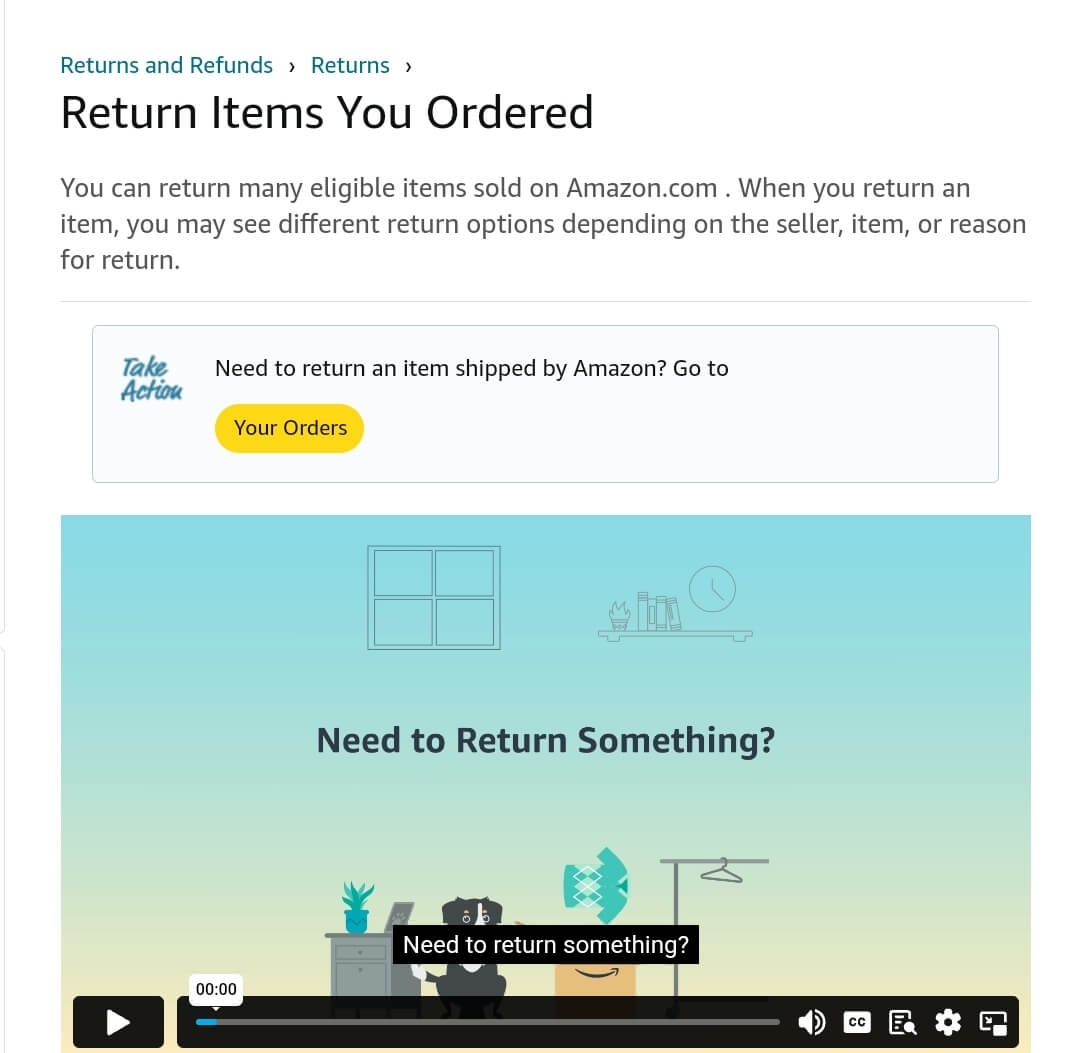
Source: Amazon
Return policies vary depending on the industry and type of product you sell. However, every policy should include information on:
For big-ticket products, consider adding more detailed conditions (e.g., requirements for extra verification) to prevent high restocking fees.
It’s important to note that specific laws govern return and refund policies to protect business and consumer rights. For businesses operating within the European Union (EU), these laws dictate:
That said, when writing any return policy, use a friendly and approachable tone to encourage customers to read it. If possible, include visuals, videos, and interactive features to illustrate the critical points. Regularly update these details to ensure accuracy.
Returns management software (e.g., online portals) allows companies to monitor real-time return status, reduce costs, and improve customer experiences.
By leveraging this technology, you can automate vital parts of the return process and improve operational efficiency.
For example, returns software can offer customers self-service options for initiating returns and automatically generating labels while keeping your team in control of inventory and process updates.
Software like Loop Returns allows customers to make instant exchanges with flexible return options, making the experience smoother for buyers and your team.

Source: Loop Returns
You can also integrate Loop Returns with your ecommerce platform (e.g., Shopify) to ensure that return-related data synchronizes across all physical or online stores.
When selecting a product returns management system, prioritize integration, scalability, and ease of use to help your team and customers adapt to it more quickly.
A well-chosen system can also help to prevent legal complications, protect your brand reputation, and avoid inventory mismanagement with features that ensure compliance.
Your return process should be simple to encourage buyers to make repeat purchases (even if this one didn’t work out).
For example, you may offer multiple free return shipping options, such as carrier pick-up from locations, drop-off points, and in-store returns. You may also email shipping labels so customers can print or scan them in post offices.
Mattress retailer Simba Sleep’s easy-to-use online returns portal simply requires a customer’s order number and email address to get started.

Source: Simba Sleep
You could also offer printed labels with QR codes with purchases to streamline the return process and avoid printing errors. That way, customers scan the code at drop-off locations and reduce admin time for themselves and your team.
You can process returns through various channels such as your website, email, or phone. Important information to gather includes:
On the other hand, asking for details like credit card information can feel like an unnecessary requirement that may put people off repurchasing.
Adding remote visual support to your customer support at this stage allows for more precise product troubleshooting. For example, an agent can visually confirm damage and determine the appropriate next steps.
Agents can also walk buyers through the returns process, offer special discounts for difficult customers, or recommend alternative products after learning more about their needs.
For example, appliance retailer Fnac Darty uses Apizee’s visual assistance solution to perform technical diagnostics and remotely solve problems.
Thanks to collaborative features such as remote snapshots and real-time shared annotations, experts can guide customers through resolving issues and naturally lower return rates.
Getting returns back through your supply chain efficiently is key to keeping costs down and customers happy. In 2024, the global reverse logistics market accounted for around $737 billion, and it’s projected to keep growing. In other words, the logistics of returning items is big business, and it’s here to stay.
Reverse logistics means taking goods from the customer’s location and moving them back to your warehouse, manufacturer, or even to landfill if necessary.
Let’s say a customer returns a sofa. An efficient reverse logistics system ensures it’s quickly routed to a repair center or store to resell via a return collection center.
Here’s what that process looks like:
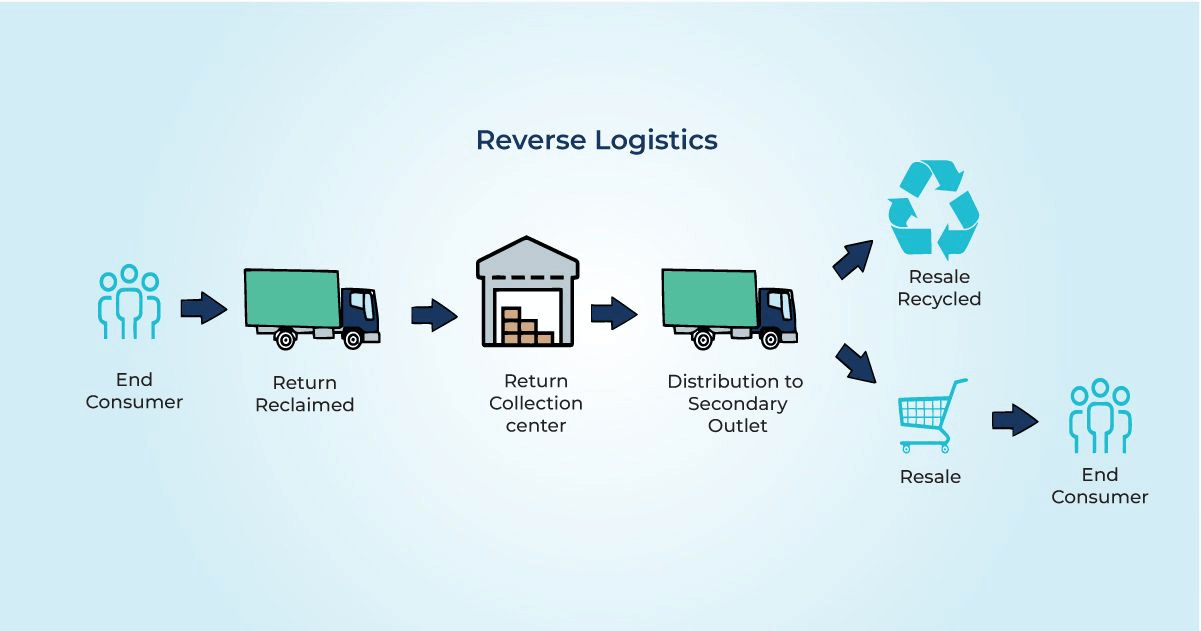
Source: Fleetx
To make this process smoother for your company, set up real-time tracking to monitor returns, confirm the item’s condition when it arrives with strict quality control, and keep detailed records.
Giving customers flexible return choices (e.g., dropping items off at a local store or scheduling a pickup) can also result in more timely returns and improve customer satisfaction.
For big-ticket items like appliances or electronics, it’s worth considering investing in special handling. For example, you may partner with couriers that promise secure, damage-free transit or your money back.
Some companies even offer white-glove pickup for premium items, reducing risks further and giving customers a high-end experience that makes them feel special.
A flexible reverse logistics strategy that uses reliable companies can help keep buyers satisfied, minimize return-related losses, and make the entire process as smooth as possible.
Depending on company policy, you may give customers an option to get their money back, use store credits, or pick a replacement product in exchange for returned items.
Either way, communicate the expected timeframe when customers request a refund. For example, European law dictates that customers should receive a refund within 14 days of requesting their cancellation.
You can use email communications to confirm when:
In this email, bag retailer Peak Design notifies a customer that their return request has been confirmed:
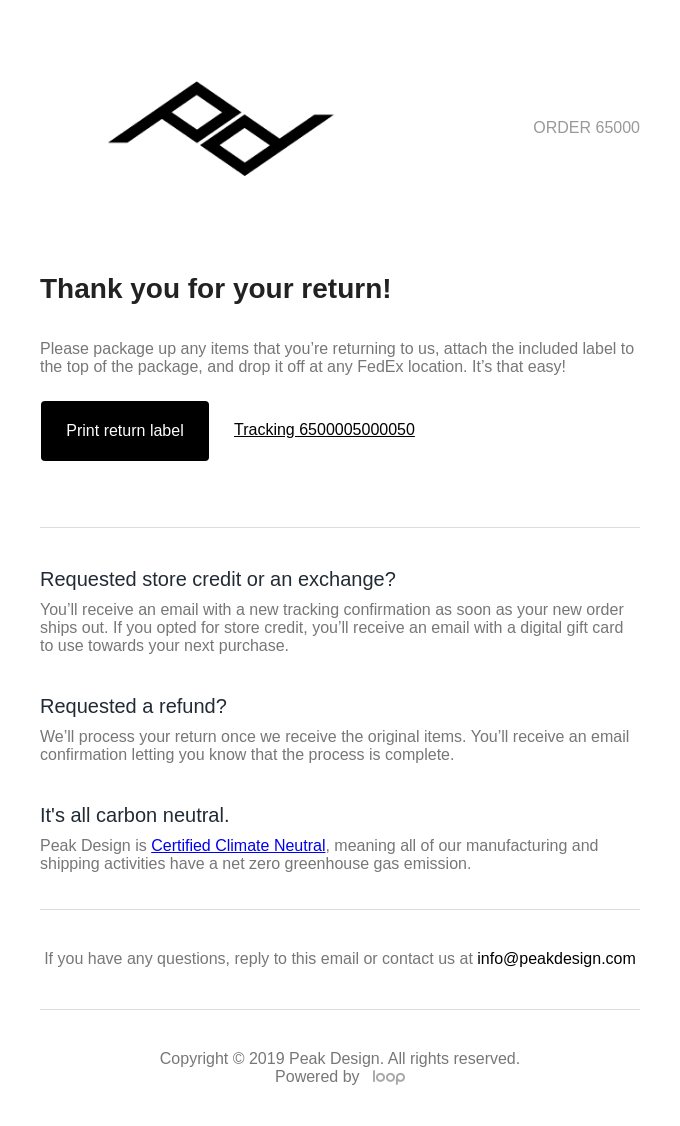
Source: Peak Design
While processing times vary, a survey of over 2,000 U.S. consumers indicated that 63% were more likely to shop at an online store that offers immediate returns. If you can implement this, you may encourage more new customers to buy from you.
If the customer wants an exchange, update your inventory management records to reflect this transaction when you start processing it and let them know.
While your returns management system should help satisfy customers and lower your team’s administrative burden, the process shouldn’t end there.
You should continually track the number of returns and analyze this data to identify common reasons, recurring trends, and gaps in your process to improve it.
Ask questions like:
Scrutinize your data to identify patterns that hurt your revenue and business reputation, such as frequent defects, fraudulent returns, and sizing issues.
Gathering real-time customer feedback during return interactions can help you better understand and address the common reasons for returns. You can ask agents to do this manually or collect it automatically using platforms like Qualtrics or ProdPad.
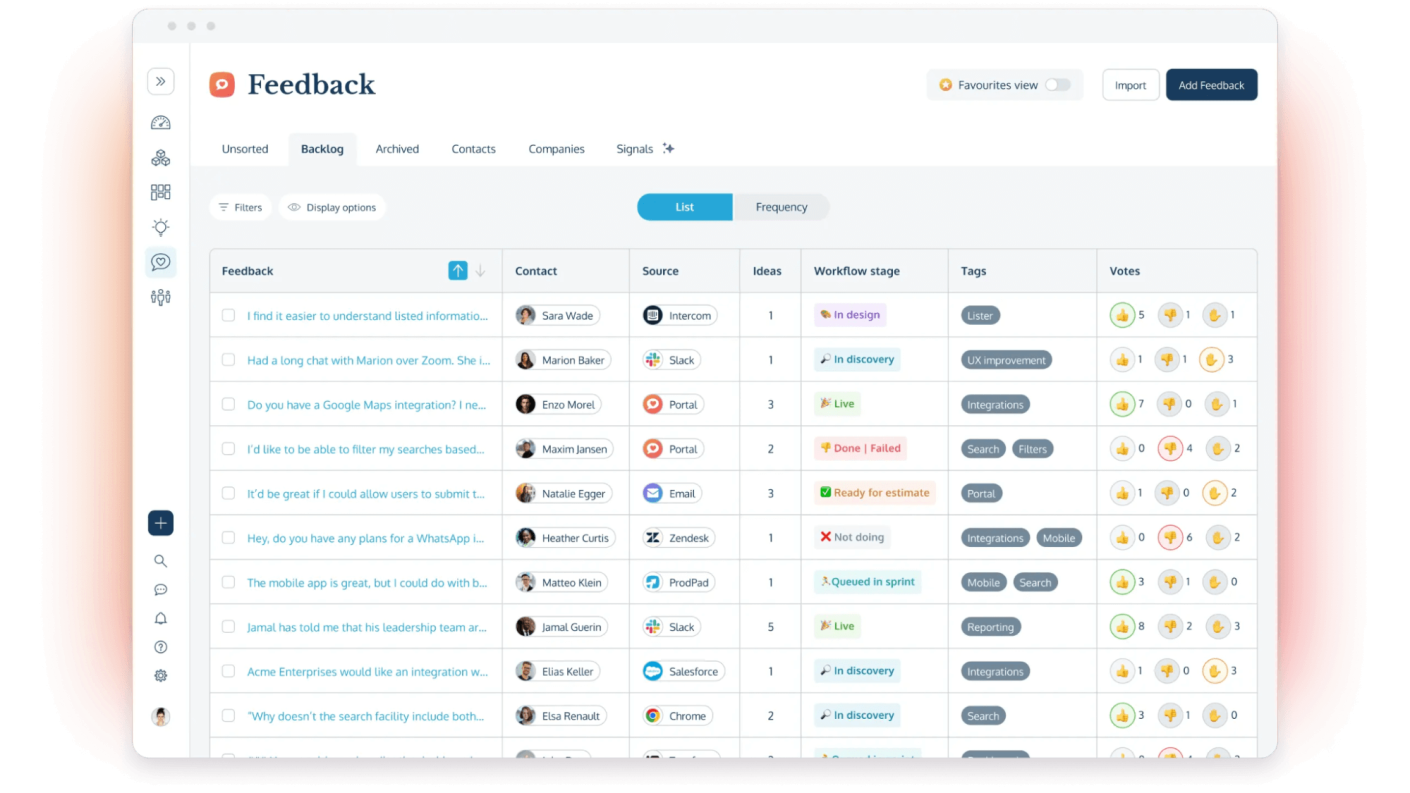
Source: ProdPad
Regularly review and update your returns management process as buyer expectations evolve and adapt your customer-facing processes accordingly.
According to the National Retail Federation, in 2020, $428 billion worth of goods were returned in the US alone.
Minimizing product returns helps improve operational efficiency, customer satisfaction levels, and profitability.
Here are three tips to reduce the likelihood of returns:
A descriptive product page minimizes mismatched expectations or confusion that can lead to returns.
Let’s say customers typically return products because they’ve ordered with the wrong specifications in mind. You can fix this by including more prominent details or sizing charts on your website.
For example, if you have a product designed for 12 volts, but customers tend to assume it’s suitable for 24 volts when purchasing, you can add “12V” to the product title, body copy, and first image that loads on the page. That way, there’s less chance a potential customer will miss it.
Branch is a premium office furniture company that uses product pages to guide customers when purchasing. The brand understands that buying office furniture can be overwhelming, so it attempts to make the process hassle-free.
Each product page includes a description, high-quality images, dimensions, color, customer reviews, and videos of the product in use.

Source: Branch
With this level of detail, customers know exactly what they’re paying for and are less likely to return the product.
Minimize customer returns with accurate and timely deliveries, ensuring customers receive exactly what they ordered and on time.
Detailed order confirmations allow customers to double-check specifications before product shipping. Here’s an example from graphic design app Affinity:
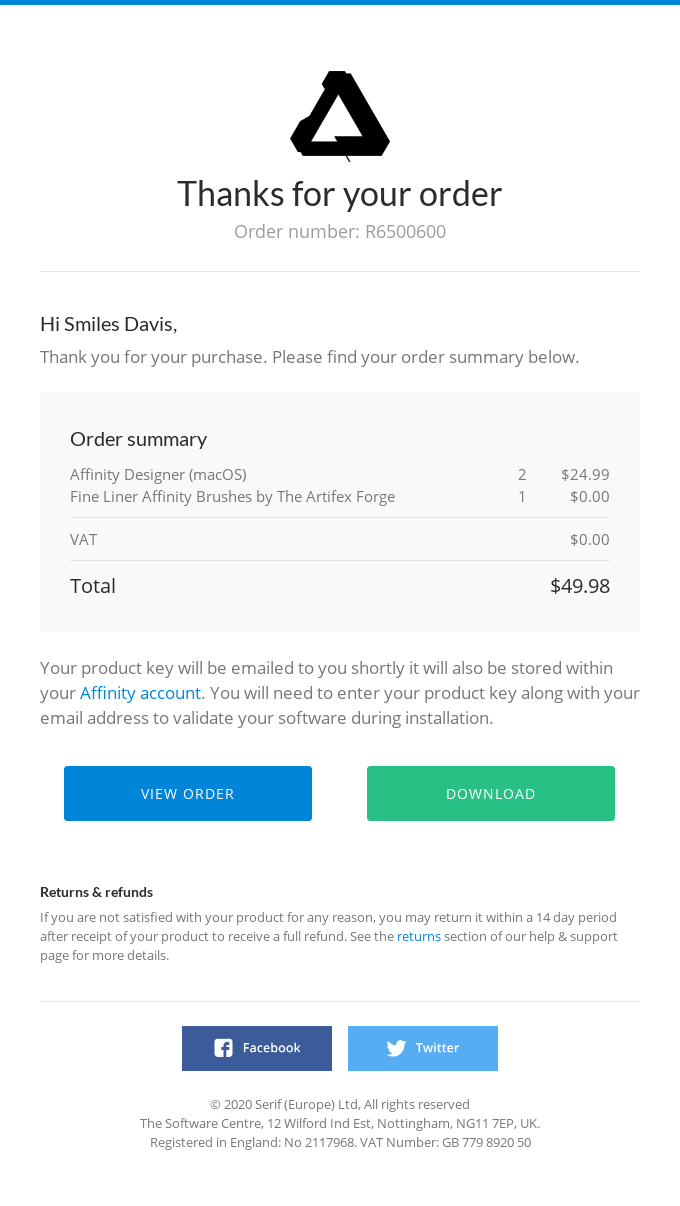
The customer can see what they’ve purchased and that the product key will be emailed “shortly.”
Keeping customers updated on their order status can reduce frustrations around missed deliveries or late arrivals. An automated system can send delivery status notifications at significant milestones to reduce admin and improve customer satisfaction.
Customers appreciate the opportunity to fully understand how to use, maintain, and care for their new products.
Taking a proactive approach to customer support and creating educational content (e.g., FAQs, product manuals, and maintenance guides) helps you anticipate and address pain points that lead to returns before they arise.
For example, telecommunications brand Xfinity offers comprehensive manuals with step-by-step guides, diagrams, and troubleshooting tips that customers can access online or when they receive the product.

Source: Xfinity
If you also offer complex products, you may provide quick-start video tutorials on your product pages.
For big-ticket items, Apizee’s click-to-call or video features allow you to offer personalized experiences to answer sales questions or solve set-up issues.
It’s easy to deploy and use without downloading an app or creating a web interface. Customers simply request a live video support session using a web link, and a support agent appears in their browser.
Agents can then use advanced interaction features (e.g., screen-sharing or annotations) to address issues and assist customers at an optimal support level.
Apizee’s user-friendly functionality lets you connect your support agents and experts with audiences of all types – including non-technical customers.
Seamless return experiences can give customers the confidence to keep shopping with you and encourage loyalty over time. When returns are straightforward, customers know you’ve got their best interests at heart, even if a purchase doesn’t work out.
Integrating visual assistance software like Apizee within your CX can also help online shoppers understand best-fit products before purchasing and how to solve problems once products arrive.
By guiding customers throughout their journey, you’ll create a more personalized shopping experience, make your operations run smoother, and naturally reduce the chances of returns.
Start improving your product returns process with Apizee's visual engagement tools, and your overall customer experience.
Get startedExplore the top customer service trends for 2026—a quick look at what’s shaping customer expectations and behaviors in the year ahead.
Customer service: trends not to miss in 2026
8 Dec 2025
Here is the list of best Call Center Conferences to attend in 2026. Check out the top events, summits and meetups globally that you can plan for this year.
List of Best Call Center Conferences to Attend in 2026
1 Dec 2025
Best Customer Experience Conferences to Attend in 2026
1 Dec 2025
Interested in our solutions?